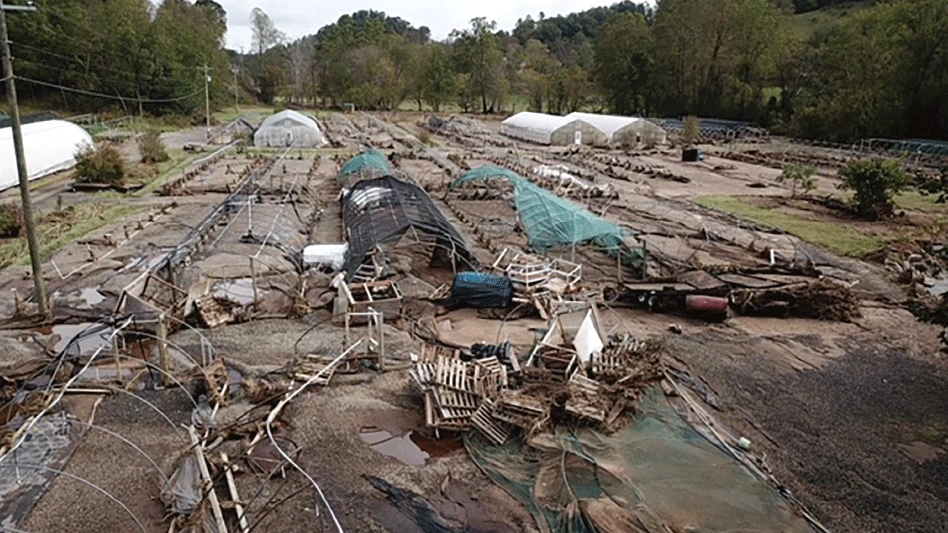 It’s never a good day when you notice a potential disease symptom on a plant. First, you feel that sinking feeling hit your stomach. Then, you dutifully prepare a sample to send to a plant diagnostics lab to confirm or disprove your fears.
It’s never a good day when you notice a potential disease symptom on a plant. First, you feel that sinking feeling hit your stomach. Then, you dutifully prepare a sample to send to a plant diagnostics lab to confirm or disprove your fears.
But too often, you wait a few days on pins and needles only to be informed that your sample is inconclusive. You have to send another. And by that point, the disease could be running rampant through your rows.
Sheila McBride is a diagnostician and extension program specialist with the Texas Plant Disease Diagnostic Lab and Texas A&M AgriLife Program Extension. She receives samples on a daily basis and she knows what is needed for a successful sample, and how to make sure growers receive the quality diagnosis they need to make decisions.
The bigger the better, and the sooner the better.
Send the whole plant if you can. This is especially important if the problem is at the root or crown level. Don’t just send a leaf and expect a diagnosis.
“If it’s leaf spot, we can do it,” McBride says. “But if it’s dieback, it’s hard to diagnose what’s happening from a leaf.”
Monday, Tuesday and Wednesday are the best days to send samples. Don’t send a sample on a Friday, because it will spend the weekend sitting in a warehouse. This becomes a bigger problem in the heat of summer. If you see symptoms on a Friday, take the sample, package it up, and refrigerate the sample and send it on Monday. And if you must send it on a Thursday, McBride recommends springing for the overnight shipping.
Go ahead and spray, but set aside a few plants before you do it.
Time is of the essence when you start seeing symptoms. It’s tempting to spray everything as soon as you notice a problem, but this can actually harm your chances of getting a useful diagnosis.
“A lot of times, I receive plant material that has already been sprayed with a fungicide,” McBride says. “They saw the symptoms, said ‘I need to do something about this’ – I don’t blame them – and they sprayed a fungicide. Then, when they ship it to me, it’s difficult to try to isolate or recover the pathogen because they have sprayed. It’s no longer present because of the spray.”
Don’t send a dead plant.
Send a plant that is beginning to show symptoms. McBride calls it a transition between healthy and dead. If it’s already a deteriorating, mushy mess, there will be other organisms breaking down the plant material. That makes it very difficult to try to isolate the pathogen or organism causing the problem.
Don't skimp on packaging.
Of course, it’s important that your sample actually makes it to the diagnostic lab in one piece.
“Some growers will just toss that plant in a box and ship it to us,” McBride says. “We all see pictures around Christmastime of how the delivery people treat those boxes. They throw them, kick them, toss them off or on trucks. There are just so many different ways that specimen is going to get abused.”
McBride suggests several tips to increase the odds that your sample ships successfully. For plants in a container, she suggests wrapping the container with a plastic bag. If you don’t want to send a pot, that’s fine. Just wrap the root ball in a plastic bag. Basically, you want to avoid soil rattling around in the box.
Once the plant is boxed up, pack it with newspaper around the foliage. McBride says newspaper provides some cushion while not harming the plant much.
Fill out the form
Most diagnostic labs require an online submission form before sending a sample. It’s important to fill out as much of the requested information as you can.
“We have boxes to check for your watering practices, your spraying program, fungicides, insecticide, and fertilizing regimen,” McBride says. “That helps me put the pieces of the puzzle together. I tell people we’re like CSI, because we’re trying to figure out what happened without being on the scene.”
A completed form helps her paint a more accurate picture of what’s going on with the plant. For example, during her examination of the sample, she might see a symptom she thinks is the result of plant growth regulators. If she knows they have been applied, she can take it into consideration.
It also helps her give better recommendations. If she knows whether a grower uses overhead or drip irrigation, she can tailor a proposed management strategy based on their watering practices.
At the TPDDL, McBride has a particular process she goes through with each submission. She bases the tests she runs on the symptoms she observes. But if you think you already know what the problem is, most labs will have a spot on the form where you can ask for a specific test.
“Even if they don’t mark anything, I have a flowchart in my mind,” McBride says.
The waiting is the hardest part.
Once your sample is on its way to the lab, you’ll probably start compulsively checking your e-mail every 10 minutes. McBride says to expect a result within 3 to 5 days, but it really depends on which tests need to be run. Certain tests are run once a week. If your sample arrives the day before that test is run, you might get an answer almost overnight. If it arrives the day after the test is run, it will be a couple of days.
McBride understands that for nursery growers, this is their livelihood. So she does what she calls a “triage” when a sample from a nursery comes in.
“I try to do as quick a diagnostic as I can, so I can get back to them and give them a management strategy,” she says. “I tell them what I’m seeing. I’ll even call them sometimes and say ‘I suspect something but I haven’t confirmed it yet.’ Different diagnostic labs do things differently. I pride myself on confirming. This means we see the organism under the microscope or we culture out the plant tissue, so we can recover the pathogen, or we run different types of tests that say, ‘Yes you’ve got Phytophthora, or leaf scorch,’ that type of thing.
The forms and fees are available on the lab’s website. TPPDL charges $35 per specimen for in state, with a $20 surcharge for out-of-state submissions.
FOR MORE: http://plantclinic.tamu.edu/

Explore the August 2014 Issue
Check out more from this issue and find your next story to read.
Latest from Nursery Management
- Hold the line!
- Meet the All-America Selections AAS winners for 2025
- Exacto announces David Hollinrake as CEO
- AmericanHort accepting applications for HortScholars program at Cultivate'25
- BioWorks hires Curt Granger as business development manager for specialty agriculture
- 2025 Farwest Show booth applications now open
- Applications open for Horticultural Research Institute Leadership Academy Class of 2026
- Just one shot






